Happy Friday! Please extend a hearty TMD welcome to the newest member of the Morning Dispatch crew, James Sutton! He was one of the Dispatch’s first interns—joining us in the fall of 2020—and we’re very excited to have him back aboard!
Quick Hits: Today’s Top Stories
- Ukrainian President Volodymyr Zelensky said Thursday that Ukrainian forces have taken full control of the Russian town of Sudzha, in the country’s Kursk region, and established a Ukrainian military commandant’s office there. As Ukraine continues its advance through the Kursk region—having captured more than eighty settlements, according to Zelensky—Russia announced additional evacuations for 20,000 people living in a Kursk regional district. Meanwhile, fighting between Ukrainian and Russian troops in the neighboring Russian region of Belgorod continued into Thursday.
- Government officials from the United States, Israel, Egypt, and Qatar met in Doha, Qatar, on Thursday to resume ceasefire and hostage release negotiations between Israel and Hamas. Hamas had declined an invitation to join the negotiations earlier this week, though leaders of the Iranian-backed terrorist organization are expected to be briefed on the ongoing negotiations through mediators present at Thursday’s meeting. “All negotiators should return to the table and bring this deal to a close,” White House National Security Council spokesman John Kirby said on Monday. “It’s time to do that. The details are of such a nature that we think they can be hashed out.”
- President Joe Biden on Thursday called for new elections in Venezuela following credible accusations of vote rigging last month in favor of the country’s authoritarian socialist leader, incumbent President Nicolás Maduro. Biden’s statement echoes calls from Venezuela’s neighbors, Colombia and Brazil, whose respective leftist presidents, Gustavo Petro and Luiz Inácio Lula da Silva, are seen as potentially crucial in forcing Maduro to cede power to opposition candidate Edmundo González—whom the U.S. has said legitimately won last month’s contest—when Maduro’s term ends in January. Opposition leader Maria Corina Machado rebuffed the suggestion of new elections, telling reporters that “the election already happened.”
- A Russian court on Thursday sentenced Ksenia Karelina, a Russian-American woman arrested by Russian authorities in January for donating to a pro-Ukraine charity, to 12 years in prison on charges of treason. Karelina, a former ballerina, contributed $51.80 to Razom, a U.S.-based non-profit delivering humanitarian aid to Ukraine, at the start of Russia’s invasion of the nation in February 2022 while living in Los Angeles. She was detained when visiting family in the Russian city of Yekaterinburg earlier this year. Karelina’s boyfriend, Chris Van Heerden, urged the State Department to work to bring her home on “CBS Mornings” on Thursday, expressing disappointment she was not included in the U.S.-Russia prisoner swap that freed three Americans earlier this month. The State Department has not designated Karelina “wrongfully detained,” which would open additional pathways to potentially negotiate her release.
- The two major party vice presidential candidates—Sen. J.D. Vance of Ohio and Minnesota Gov. Tim Walz—agreed on Thursday to a debate hosted by CBS News on October 1. CBS tweeted Wednesday that it had extended debate invitations to Vance and Walz, offering four date choices. “See you on October 1, JD,” Walz responded. Vance agreed to the debate proposal on Thursday morning and challenged Walz to a second vice presidential debate—hosted by CNN on September 18—though a statement from the Harris-Walz campaign indicated Walz would only participate in the October event.
- The Biden administration on Thursday announced new negotiated prices for ten drugs under Medicare—including treatments for diabetes, heart failure, and blood cancers—that will go into effect in 2026, as part of the Inflation Reduction Act signed into law in 2022. Medicare-negotiated pricing—a form of regulatory price control in the pharmaceutical industry—requires drug manufacturers to sell their products at the negotiated price or face high excise taxes.
- New Jersey’s Democratic Gov. Phil Murphy is reportedly poised to appoint his former chief of staff, George Helmy, to serve the remainder of Sen. Bob Menendez’s term following the senator’s resignation, which is expected next week. A federal jury found Menendez guilty last month on 16 counts related to a foreign bribery scheme. Helmy, a longtime aide to prominent New Jersey Democrats, served as Murphy’s chief of staff from 2019 to 2023. The deep blue Garden State will elect a full-term senator to the seat this November.
- Former President Donald Trump’s attorneys asked Judge Juan Merchan on Wednesday to delay his sentencing in Trump’s hush money case until after this November’s election. The Republican presidential nominee’s lawyers, Todd Blanche and Emil Bove, wrote to Merchan arguing Trump’s current sentencing date of September 18 could sway voters ahead of the start of early voting. Merchan, who on Tuesday declined for the third time to recuse himself from the case, moved sentencing from its original July 11 date to weigh the impact of the Supreme Court’s Trump v. United States decision, which affirmed that presidents have some level of immunity from prosecution. Merchan is set to decide if the case is affected by the Supreme Court’s ruling by September 16.
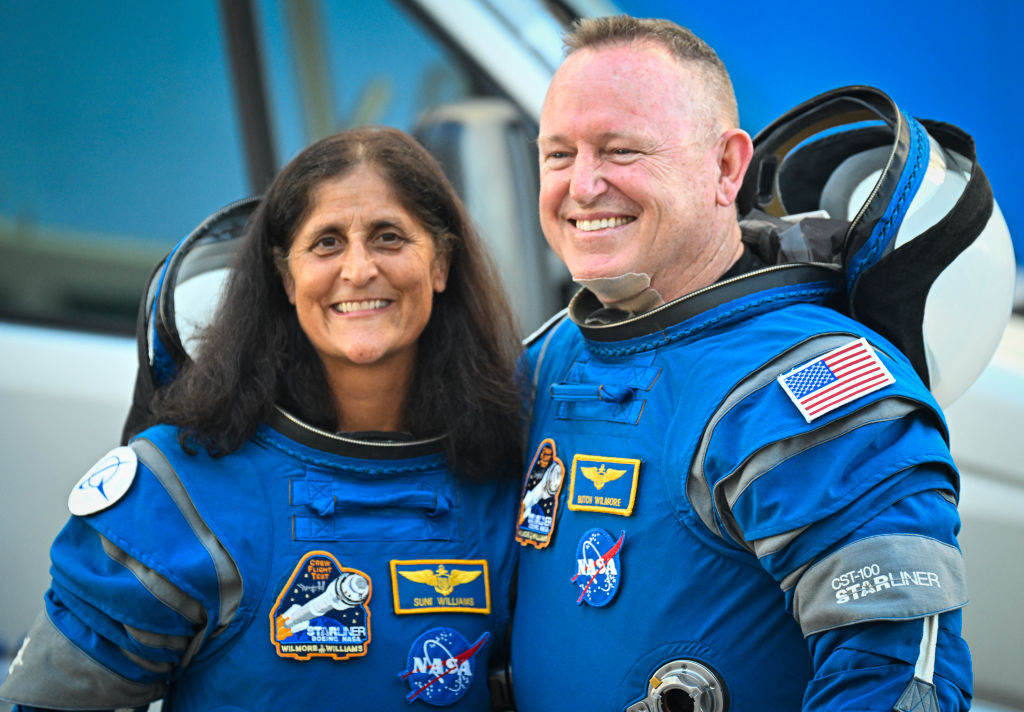
Houston, we have another problem.
It’s been 72 days since two American astronauts, Barry “Butch” Wilmore and Sunita Williams, took off from Cape Canaveral, Florida, on a Boeing Starliner spacecraft bound for the International Space Station (ISS) for what was supposed to be an eight-day mission. The pair successfully docked at the ISS the following day, but only after experiencing problems with some of Starliner’s thrusters. More than two months later, NASA is still trying to get to the bottom of the problem with the Boeing craft, and the delayed return is just the latest in a series of bad news cycles for the beleaguered aerospace giant.
Now the question becomes whether to wait to bring Wilmore and Williams home with a return ticket on the Starliner or have them hitch a ride on a SpaceX craft that is bound for the ISS as part of a separate manned mission and set to return to Earth many months from now.
How did Wimore and Williams end up with such an extended stay 250 miles above sea level? Their June launch and flight went smoothly, but when it came time to dock at the ISS, several of the Starliner’s 28 thrusters failed to operate. The thrusters are part of the craft’s Reaction Control System (RCS) that enables it to maneuver in orbit. The system generally fires frequently in short bursts to steer the craft, and five of the thrusters malfunctioned when approaching the ISS, prompting a delay in docking—with some adjustments, the crew was ultimately able to dock without further incident.
Back on Earth, NASA now has to determine the underlying problem on a spacecraft floating in Earth’s orbit. Teams have been working on the ground at a NASA facility in White Sands, New Mexico, testing the same types of thrusters which produced similar failures. Engineers believe the issue could be caused by a valve seal expanding at higher temperatures and restricting propellant flow in the thruster, but they don’t know exactly why it’s happening.
Having a few RCS thrusters go out isn’t necessarily a catastrophic failure. The Starliner’s four main engines, which have been in working order so far, would provide the power to get the aircraft home, but NASA requires confidence that enough of the thrusters are working sufficiently to keep Starliner on the right trajectory for reentry and landing. Since docking, Boeing and NASA engineers have tested the thrusters, firing them up individually, and four out of the failed five are back in working order.
It seems possible the problem could be the result of faulty system design and not necessarily a single point of failure. “It’s not like [the thrusters] break permanently,” Jonathan McDowell—a researcher at the Harvard-Smithsonian Center for Astrophysics—told TMD. “When you fire them too close together too often … and they overheat, then they get into a bad mode. But you can clear that mode over time.”
“It seems like it could be a generic problem with this thruster design,” he added, because docking and undocking can require the thrusters to pulse repeatedly, potentially resulting in overheating.
Ken Bowersox, NASA’s space operations mission chief, said during a media briefing on Wednesday that the agency has consulted outside engineers about the problem. “We’ve gotten feedback on what we’re seeing, and a lot of it is confirming what we thought was causing the signatures that we were observing on orbit,” he said but acknowledged that “it’s really tough when you don’t have the actual hardware to look at, when it’s up in space.”
All of the uncertainty makes it difficult to make a quantifiable judgment about the risk associated with sending Wilmore and Williams home on the Starliner. “We don’t have enough insight and data to make some sort of simple black-and-white calculation, that says this is what you should do or not do,” said NASA safety chief Russ DeLoach.
NASA has spent weeks analyzing data from the in-orbit and on-the-ground tests, but has yet to come to a consensus on how to move forward. “It’s a fairly major discussion to decide about whether or not we’re going to have crew onboard Starliner for return,” Bowersox said. The agency is completing a final round of data analysis before a “Flight Readiness Review” decides how to proceed, likely by the end of next week.
If the agency determines it’s ultimately too perilous to bring the astronauts home on the Starliner, the alternate plan would likely be to return the Starliner unmanned, controlled remotely. Wilmore and Williams would then come home aboard a SpaceX Dragon spacecraft. The Crew-9 mission on the Dragon was originally scheduled to launch on August 18, but NASA delayed it until at least September 24 as it evaluates Starliner. Crew-9 was planned as a four-person expedition, but could take off with two empty seats that Wilmore and Williams could fill upon Dragon’s return to Earth in February 2025, following a six-month rotation at the ISS.
In other words, if Wilmore and Williams catch a ride on the Dragon, their eight-day mission will extend to eight months.
The astronauts seem to be taking their extra time in space in stride. “We are having a great time up here on ISS,” Williams said in a July press conference broadcast from the ISS. “Butch and I have been here before, and it feels like coming back home.” The ISS is bigger than a 6-bedroom house and is regularly resupplied by unmanned spacecraft, the most recent of which lifted off on Wednesday—so Butch and Sunita won’t need to grow their own food.
Even as NASA seems circumspect about Starliner’s chances, Boeing has maintained confidence in Starliner’s ability to return the astronauts safely. In fairness, the mission was a test flight designed to iron out any issues with the spacecraft. “We were expecting to find some things,” Wilmore said last month.
“This is a tough business that we’re in,” he said. “Human spaceflight is not easy in any regime, and there have been multiple issues with any spacecraft that’s ever been designed, and that’s the nature of what we do.” NASA has also maintained that–despite not knowing how exactly they’ll return to Earth—the astronauts are not actually “stranded” since the Starliner remains the “Safe Haven” in which the astronauts can shelter in the event of an emergency on the ISS that would require undocking from the station.
But there does seem to be some daylight between Boeing’s expressed confidence and the level of risk NASA is comfortable with—no Boeing representatives were present for Wednesday’s media briefing. “You have this unquantified and unknown risk of bringing the astronauts home on Starliner versus a better-understood set of risks,” McDowell told TMD. “It’s not like Dragon is 100 percent safe, but they have high confidence in it.”
In 2020, SpaceX—owned by Elon Musk—became the first commercial spacecraft system certified by NASA to ferry people to the ISS. Boeing, historically a leader in the spacecraft industry, has spent more than a decade trying to catch up with Starliner and has lost $1.6 billion in the process. Starliner’s manned launch was originally planned for May but was delayed three times over separate mechanical and computer issues.
It’s unclear how much the thruster issues will set back Boeing in its quest to see Starliner certified as an ISS ferry. “If you can get to a point where you understand the issue, and you can convince NASA that you’ve now fixed the issue for the next flight, then you can be certified,” McDowell said. “I don’t think it matters for [certification] whether Starliner comes home with a crew or without. It does matter that it comes home intact.”
NASA has continued to stand by the program publicly, but the devil will be in the details. “We’ve got two very good companies, and we want to develop two strong and capable spacecraft,” Bowersox said Wednesday. “We still think we have a very good chance of doing that. But the answer is always in the data.”
Worth Your Time
- Will anything change at Columbia University following Minouche Shafik’s resignation as president? Probably not, Seth Mandel argued in Commentary, because “we live in the age of the interchangeable technocrat, the permanent managers who come and go through a revolving door filled with people who think like them, act like them, and fail like them.” Minouche is part-and-parcel of that class, Mandel wrote. “You don’t have to worry about Minouche Shafik; she always lands on someone’s feet. Her life peerage in the House of Lords is nothing compared to her life peerage in the House of Technocrats. Truth is, Shafik’s stacked resume should have been a warning sign—not that she was overqualified for Columbia, but that she is part of a global class of bureaucrats who live and work on autopilot. She has reached that heralded point in her career at which her jobs are interchangeable. Once you are admitted to this class, there is little you can do to earn expulsion.”
- Ilya Yashin—a Russian opposition politician and prisoner in Vladimir Putin’s Russia beginning in 2022 until his release this month in a prisoner swap—wanted to be excluded from a prisoner swap. Why? “Russia is my home,” Yashin told the New Yorker’s Joshua Yaffa. “The mere thought that someone would kick me out of my home is outrageous. Why does Putin get to decide if I live here or not? It’s just as much my country as his.” Yashin, now residing in Berlin, explained the difficult adjustment to society after spending 18 months in a Russian prison. “The other night, he went for a walk around Berlin and ended up on a wide, multilane thoroughfare,” Yaffa wrote. “His head started to spin. ‘It was as if I were intoxicated,’ he told me. ‘I hadn’t been in such a wide-open space in two years.’ He caught himself a few times stepping outside his hotel room and, unconsciously, putting his hands behind his back—a reënactment of the orders that guards gave every time they escorted him from his cell.”
Presented Without Comment
CNN: Tim Walz’s 2006 Campaign Falsely Described Details About His Arrest For Drunk Driving in 1995
According to court and police records connected to the incident, Walz admitted in court that he had been drinking when he was pulled over for driving 96 mph in a 55 mph zone in Nebraska. Walz was then transported by a state trooper to a local hospital for a blood test, showing he had a blood alcohol level of .128, well above the state’s legal limit of 0.1 at the time.
But in 2006, his campaign repeatedly told the press that he had not been drinking that night, claiming that his failed field sobriety test was due to a misunderstanding related to hearing loss from his time in the National Guard. The campaign also claimed that Walz was allowed to drive himself to jail that night.
None of that was true.
Also Presented Without Comment
New York Times: At News Conference, Donald Trump Says He’s ‘Entitled to Personal Attacks’ Against Kamala Harris
“I don’t have a lot of respect for her intelligence, and I think she’ll be a terrible president,” he said, adding, “She certainly attacks me personally.”
Also Also Presented Without Comment
Business Insider: A Ukrainian Soldier Said Russian Troops in Kursk Were ‘Sitting in the Forest and Drinking Coffee,’ Unaware They Were Being Invaded
In the Zeitgeist
We were sad to learn that two-time Oscar-nominated actress Gena Rowlands passed away on Wednesday at the age of 94 after being diagnosed with Alzheimer’s disease. Rowlands is best known for her critically acclaimed portrayals of intense, dramatic characters in films directed by her husband, fellow actor John Cassavetes. But we will mainly remember her in her role as an elderly Allie Calhoun in this mid-2000s tearjerker:
Toeing the Company Line
- In the newsletters: Will argued we should be optimistic about geoengineering as a potential solution to climate change, and Nick waded into (🔒) the Jonah v. David showdown.
- On the podcasts: Sarah was joined on The Dispatch Podcast roundtable by Jonah and Megan McArdle to discuss David French’s controversial op-ed endorsing Kamala Harris and the meaning of voting. And Dispatch members should keep an eye on their Skiff (🔒) feeds later today—David and Jonah are going to hash things out mano a mano.
- On the site: Drucker dives into the vice presidential vetting process and why it typically takes longer than the two weeks Kamala Harris had, Scott Howard explains Donald Trump’s appeal to young men, and Kevin zeroes in on the three reasons Trump is falling behind in the race: He is lazy, he is stupid, and he is childish.
Let Us Know
If you were the astronauts, would you wait to go home on the SpaceX ship or take your chances with the Boeing Starliner?




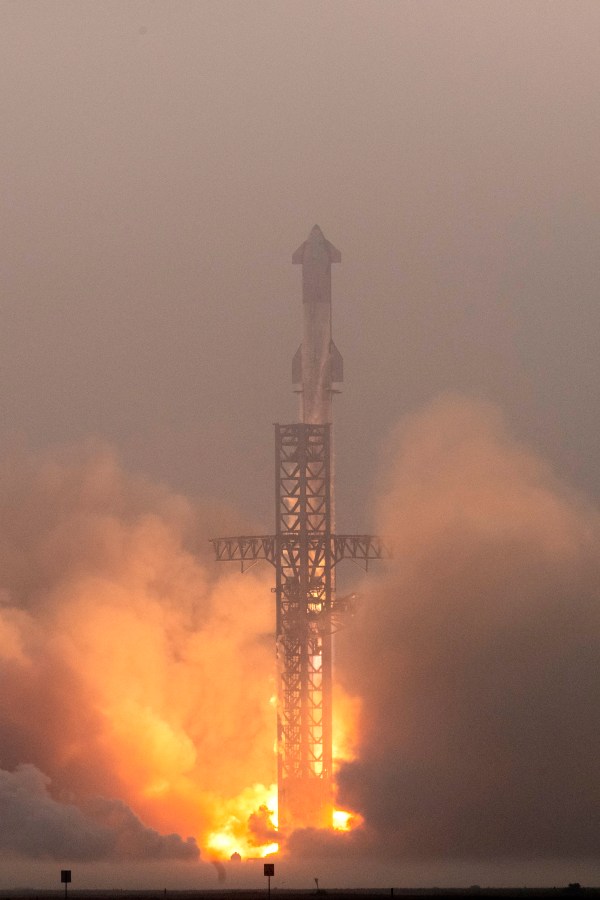
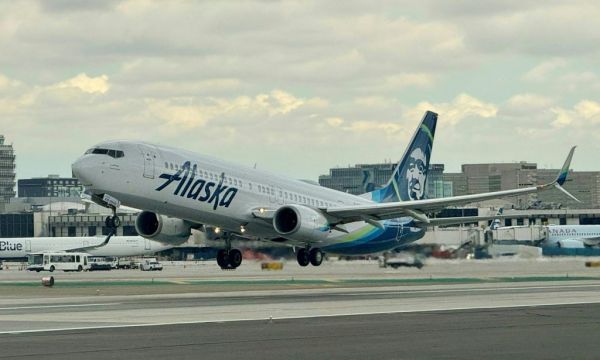
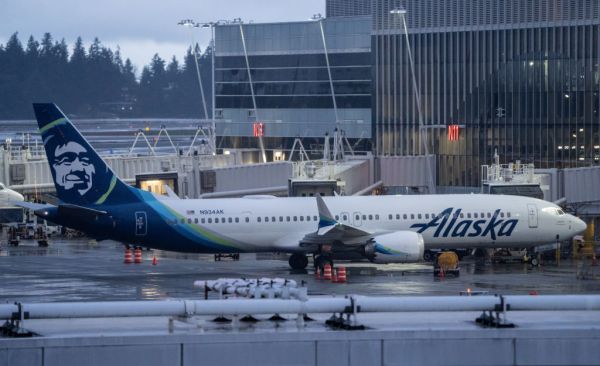
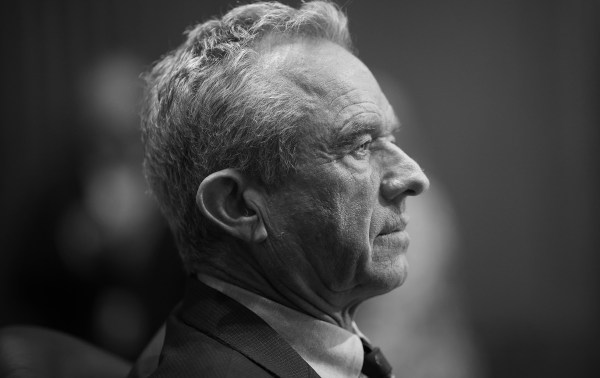
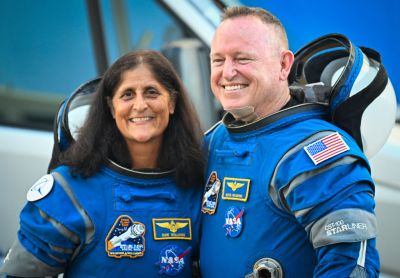
Please note that we at The Dispatch hold ourselves, our work, and our commenters to a higher standard than other places on the internet. We welcome comments that foster genuine debate or discussion—including comments critical of us or our work—but responses that include ad hominem attacks on fellow Dispatch members or are intended to stoke fear and anger may be moderated.
With your membership, you only have the ability to comment on The Morning Dispatch articles. Consider upgrading to join the conversation everywhere.